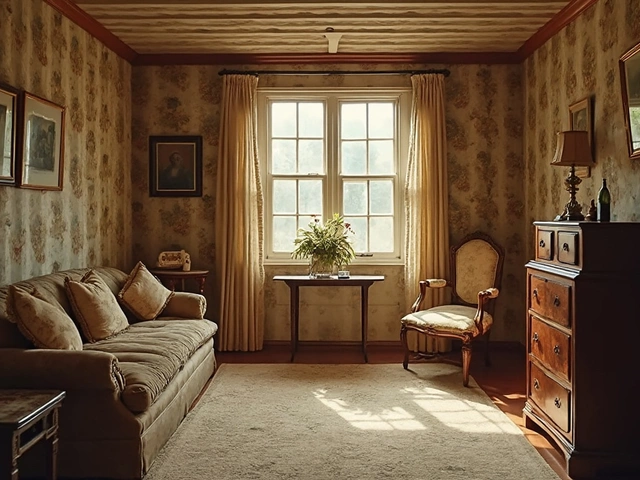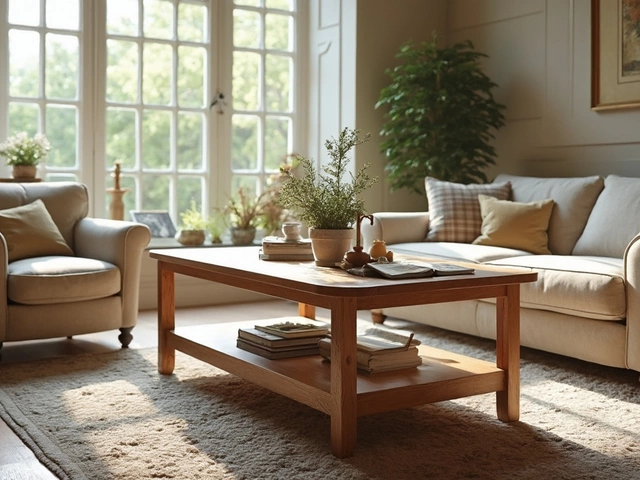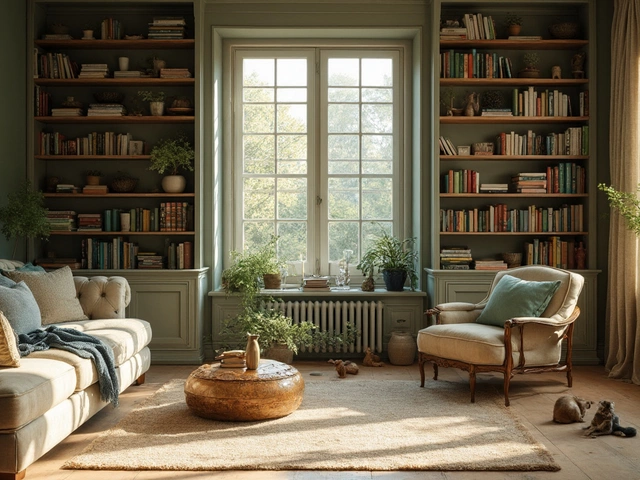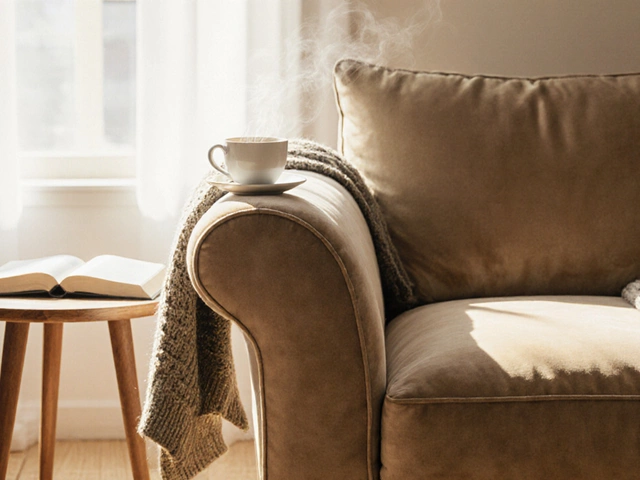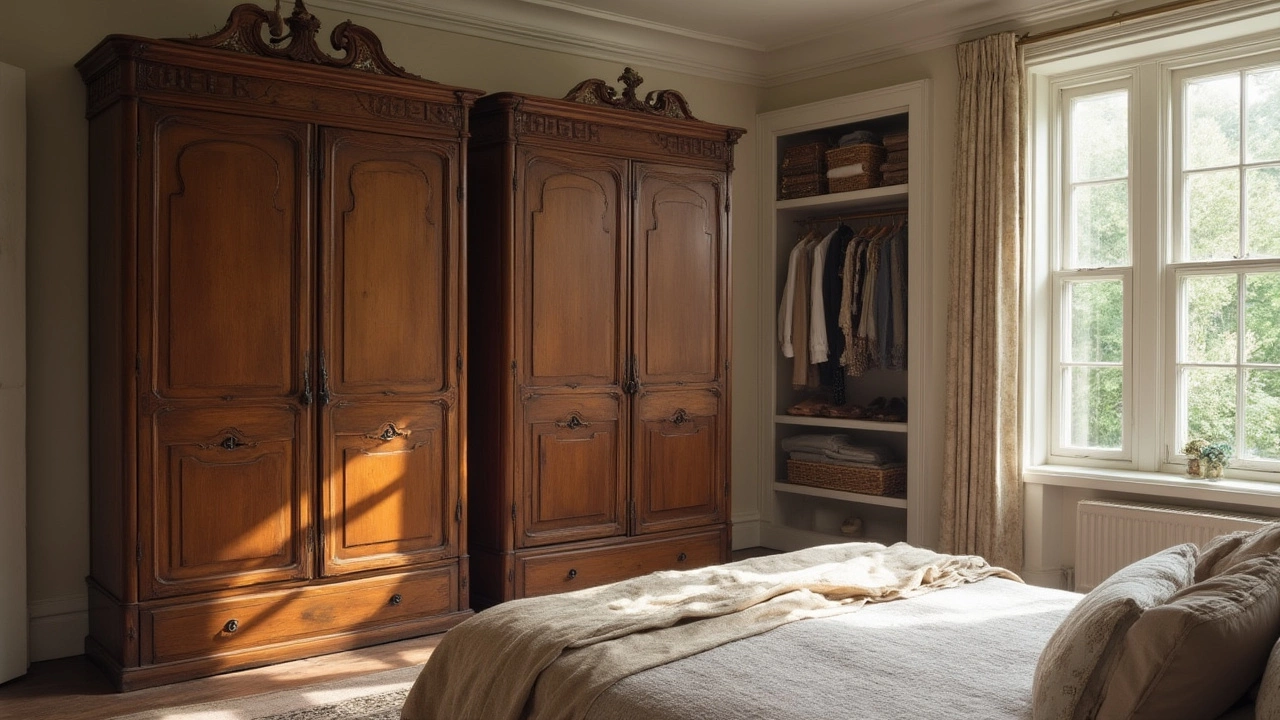 10
Jul,2025
10
Jul,2025
Imagine someone telling you to put your coat in the wardrobe, and your mind flashes to Narnia. Now you’re in New York, and you ask where the wardrobe is—blank stares all around. Sometimes, language pulls these funny little tricks on us, especially when furniture is involved. The term ‘wardrobe’ feels perfectly natural in places like the UK or here in Australia, but try tossing it into conversation across the US and you’ll likely get corrected to ‘closet’. So, what’s actually going on, and why do the words we use for a place to stash our clothes shift so much, depending on which side of the world you’re standing?
What Americans Call a Wardrobe
In the United States, the word everyone uses for a space to hang up their clothes is “closet.” You pop your shoes in the closet, your shirts in the closet, you might even have a walk-in closet if you’re lucky. It’s the American go-to term, so much so that ‘wardrobe’ usually refers either to your collection of clothes or to the occasional piece of furniture you spot at an antiques shop.
But let’s be clear—there’s a proper furniture history behind this. Classic European homes, especially pre-1900, didn’t always have built-in places to shove your jackets, so free-standing “wardrobes” (basically big cabinets with doors for hanging your stuff) were popular. But in the US, newer houses (especially after the 20th century) swapped those out for built-in storage. That made a closet just a small room or recess with a door, and the term 'wardrobe' shifted to mean just “all the clothes you own” for most Americans.
Still, you do see furniture retailers in the US selling “armoires,” which are a bit like wardrobes—large, free-standing, and usually fancier. But call it a wardrobe, and most Americans will understand you, but might think you’re aiming for British charm or talking about classic décor.
One interesting stat: By 1950, almost 95% of new American homes had some form of built-in closet. That’s compared to England or even Australia, where fitted wardrobes really only became standard in new builds after the 1970s. In older American homes, you might still find no closets and have to rely on a stand-alone cabinet—guess what, in the States, people would probably call it an “armoire” or sometimes a “wardrobe,” just like in olden times.
So if you’re American, nine times out of ten, you’ll use ‘closet’ for built-in storage and ‘armoire’ or ‘wardrobe’ if you’re feeling fancy, decorating, or shopping at IKEA.
Wardrobe or Closet? Breaking Down the UK, US, and Aussie Lingo
If you move between countries, you’ll hear these furniture words tossed around with different meanings. In the UK, “wardrobe” is both the old-school cabinet and, more recently, the built-in space for your hanging shirts. In Australia, it’s somewhere in between—we’ll gleefully mix “wardrobe” and “closet,” but “wardrobe” gets used more, probably thanks to our British roots.
Spend any time watching US sitcoms, and you’ll get used to “closet”—Monica’s walk-in closet on Friends, Carrie’s infamous shoe-filled closet in Sex and the City, that’s the norm. Down Under, I’m used to estate agents showing off “built-in wardrobes,” and Brits are likely to say something similar, albeit with a posher accent.
The word “closet” doesn’t usually mean furniture—just the actual space. In the UK and Australia, “wardrobe” is either the big piece of furniture or the built-in with doors and rails. Meanwhile, if you say “closet” to an Aussie, they might think of a cleaning cupboard or, more often, the ‘water closet’ (which means toilet—yeah, English is wild like that).
- Wardrobe (UK/Australia): Freestanding or built-in storage for clothes (furniture and the storage area itself).
- Closet (US): A built-in recess or small room for storing clothes; rarely a piece of furniture.
- Armoire (US and UK): A fancy, often antique, freestanding wardrobe.
- Robe (Australia): Aussie slang for wardrobe or built-in closet (‘His ‘n’ Hers robes’ in real estate ads).
So if you ever want to avoid sounding like a tourist when talking about your home, listen for local cues. If you’re in the UK or Australia, “wardrobe” is safe. In the US, “closet” wins every time.
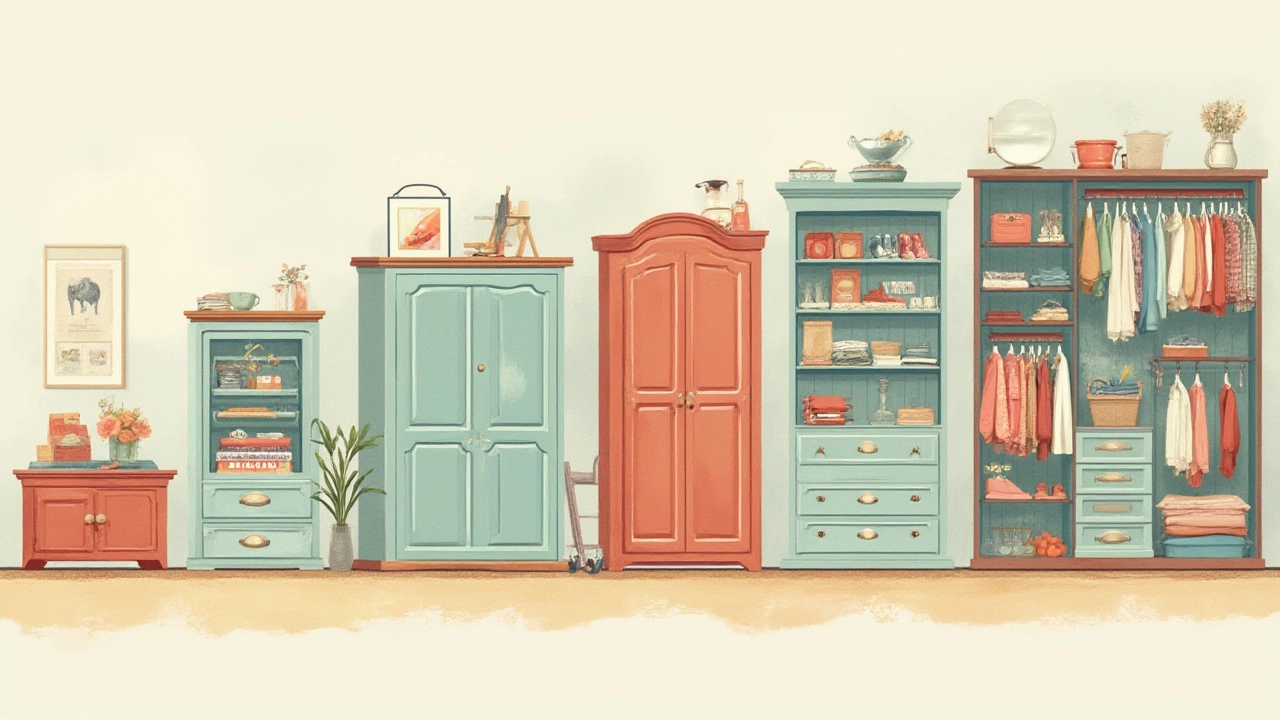
Surprising Origins and Cultural Differences
Let’s geek out for a second. The word “wardrobe” comes from the Old French “garderobe,” literally meaning a room to guard your robes. These started out as rooms, then shrunk to cupboards that held not just clothes but valuables, from furs to money. Over centuries, wardrobes turned from gigantic, room-sized spaces for medieval kings to fancy wood cabinets—sometimes so heavy you needed two rugby teams just to nudge one across the floor.
Meanwhile in the US, “closet” comes from the Latin “clausum,” meaning closed space. Early American settlers built small storage rooms for everything—linen, tools, weapons—and only later did “closet” get narrowed to mean “the place where clothes go.”
Culturally, this difference says a lot. Brits and Aussies historically hung onto their traditions—old houses with no closets at all meant you bought a solid wardrobe for every bedroom. In the land of bigger houses and suburbia, Americans just built a closet into every new home. Americans are also big on the idea of the “walk-in closet”—a mini-room for your entire wardrobe (the clothes, not the cabinet). In Australia and the UK, you’ll still find that big, imposing wardrobe is centre-stage in older homes. In Europe, fitted wardrobes have become the norm in new flats and houses thanks to storage and space-saving needs.
Check this out for a quick comparison:
| Country | Common Term | Usual Form | Furniture or Built-in? |
|---|---|---|---|
| USA | Closet | Small built-in room/space | Built-in |
| UK | Wardrobe | Freestanding or built-in | Both |
| Australia | Wardrobe / Robe | Usually built-in | Both |
| France | Armoire | Large, ornate cabinet | Furniture |
So the lines blur, depending on which country is doing the talking. The piece of furniture you buy at IKEA or from a vintage shop might be called a wardrobe, but if you want to sound like a local in New York, say “closet.”
Choosing the Right Storage for Your Home: Practical Tips
Let’s be real—does the name matter if your jeans are always on the floor? A good wardrobe or closet is about function first. Americans might get more built-in closets, but city apartments can be small, and then an IKEA wardrobe beats nothing every single time. Brits and Aussies still love a massive wardrobe for a reason—it hides mess, lasts forever, and in older homes, solves the eternal problem of “this house has literally zero storage.”
Most people get tripped up when renovating or house-hunting across borders. If you’re moving to the US, expect closets in bedrooms—sometimes more than one, and often shallow, just deep enough for hangers. In older cities (think Boston or San Francisco), you’ll sometimes still need to buy yourself a big wardrobe if there’s nowhere built in. Hunting for furniture? In the US, search for 'armoire' if you want a free-standing unit. In Australia or the UK, 'wardrobe' will get you what you need.
Here are a few real-life tips for getting the most out of your storage, whatever you call it:
- Measure first! Standard closet depths in the US are 24 inches, but wardrobe depths vary (some are only 18 inches deep).
- Think modular—systems like IKEA Pax or Elfa can be mixed and matched, great for small apartments or rental spaces.
- Double up—using both a built-in closet and a freestanding wardrobe can clear out seasonal clothes or help families with loads of stuff.
- Know the weight—old wooden wardrobes can weigh a ton, so check your floorboards or talk to your landlord before buying vintage.
- Sliding vs swinging doors—wardrobes with sliding doors save floor space in smaller bedrooms.
- Add organizers—baskets, hanging rails, and shoe racks keep closets and wardrobes from turning into a black hole of lost socks.
One other hack: If you live in a rental in the US and the closet is a sad little thing, buy a “garment rack” or a tall wardrobe—a cheap and fast way to avoid piles on the chair. Aussies, same goes if your built-in robe is close to useless.

Which One Should You Get? Local Trends and What’s Popular
Right now, interior design trends are doing a weird loop. American homes are seeing a mini-renaissance for massive walk-in closets, especially in new-builds and renovations—think entire rooms dedicated to shoes, mirrors, and an almost Kardashian level of décor. Built-in shelves, storage cubes, and lighting are hot features. For renters or folks in super-urban areas, though, a free-standing wardrobe is still a life-saver. Retailers target those spaces with flat-pack wardrobes and modular systems.
In the UK and Australia, built-ins or fitted wardrobes are often considered a must-have when selling your home, but stand-alone wardrobes are still popular in heritage or period properties—and for people who actually want to move their furniture. Fun fact: A market research report in 2024 listed wardrobes as the second-most popular bedroom furniture purchase in Britain, right after mattresses.
Here in Melbourne, you’ll see plenty of built-in wardrobes in new units and houses, but older places still come with character-filled free-standing wardrobes—sometimes so sturdy and beautiful they’re passed down as family heirlooms. IKEA and Freedom furniture sell both, catering to renters and renovators alike.
Buying second-hand? Vintage armoires (a French import) can be found at op-shops and auctions. They’re solid wood, can be re-painted at home, and will outlast any flat-pack, though you might need friends to help you move them.
It’s not just about language—it’s about lifestyle, house type, and even where you live. Americans get more built-in space, Brits and Aussies still love a solid wardrobe, and almost everyone agrees: the more storage, the better. So next time someone asks you to toss your coat in the wardrobe and you’re in the US, just aim for the closet—you’ll fit right in.
